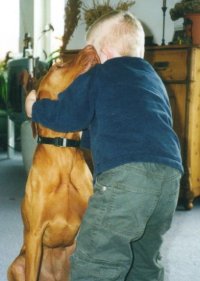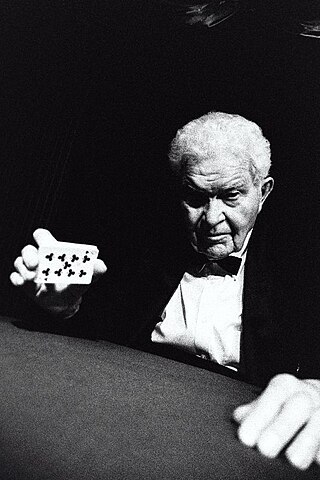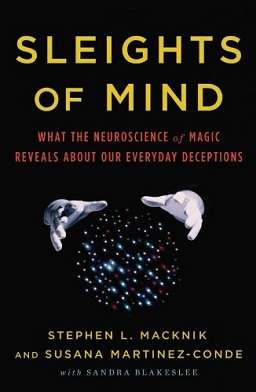Occupational therapists (OTs) are health care professionals specializing in occupational therapy and occupational science. OTs and occupational therapy assistants (OTAs) use scientific bases and a holistic perspective to promote a person's ability to fulfill their daily routines and roles. OTs have training in the physical, psychological, and social aspects of human functioning deriving from an education grounded in anatomical and physiological concepts, and psychological perspectives. They enable individuals across the lifespan by optimizing their abilities to perform activities that are meaningful to them ("occupations"). Human occupations include activities of daily living, work/vocation, play, education, leisure, rest and sleep, and social participation.
Psychology is an academic and applied discipline involving the scientific study of human mental functions and behavior. Occasionally, in addition or opposition to employing the scientific method, it also relies on symbolic interpretation and critical analysis, although these traditions have tended to be less pronounced than in other social sciences, such as sociology. Psychologists study phenomena such as perception, cognition, emotion, personality, behavior, and interpersonal relationships. Some, especially depth psychologists, also study the unconscious mind.

David Seth Kotkin, known professionally as David Copperfield, is an American magician, described by Forbes as the most commercially successful magician in history.
Sleight of hand refers to fine motor skills when used by performing artists in different art forms to entertain or manipulate. It is closely associated with close-up magic, card magic, card flourishing and stealing. Because of its heavy use and practice by magicians, sleight of hand is often confused as a branch of magic; however, it is a separate genre of entertainment and many artists practice sleight of hand as an independent skill. Sleight of hand pioneers with worldwide acclaim include Dan and Dave, Ricky Jay, Derek DelGaudio, David Copperfield, Yann Frisch, Norbert Ferré, Dai Vernon, Cardini, Tony Slydini, Helder Guimarães and Tom Mullica.
Rehabilitation of sensory and cognitive function typically involves methods for retraining neural pathways or training new neural pathways to regain or improve neurocognitive functioning that have been diminished by disease or trauma. The main objective outcome for rehabilitation is to assist in regaining physical abilities and improving performance. Three common neuropsychological problems treatable with rehabilitation are attention deficit/hyperactivity disorder (ADHD), concussion, and spinal cord injury. Rehabilitation research and practices are a fertile area for clinical neuropsychologists, rehabilitation psychologists, and others.

Occupational therapy (OT) is a healthcare profession that involves the use of assessment and intervention to develop, recover, or maintain the meaningful activities, or occupations, of individuals, groups, or communities. The field of OT consists of health care practitioners trained and educated to improve mental and physical performance. Occupational therapists specialize in teaching, educating, and supporting participation in any activity that occupies an individual's time. It is an independent health profession sometimes categorized as an allied health profession and consists of occupational therapists (OTs) and occupational therapy assistants (OTAs). While OTs and OTAs have different roles, they both work with people who want to improve their mental and or physical health, disabilities, injuries, or impairments.

Art therapy is a distinct discipline that incorporates creative methods of expression through visual art media. Art therapy, as a creative arts therapy profession, originated in the fields of art and psychotherapy and may vary in definition. Art therapy encourages creative expression through painting, drawing, or modelling. It may work by providing a person with a safe space to express their feelings and allow them to feel more in control over their life.

Horticultural therapy is defined by the American Horticultural Therapy Association (AHTA) as the engagement of a person in gardening and plant-based activities, facilitated by a trained therapist, to achieve specific therapeutic treatment goals. Direct contact with plants is believed to guide a person's focus away from stress enhancing their overall quality of life. The AHTA believes that horticultural therapy is an active process which occurs in the context of an established treatment plan. Horticultural therapists are specially educated and trained members of rehabilitation teams who involve the client in all phases of gardening, from propagation to selling products, as a means of bringing about improvement in their life.

Animal-assisted therapy (AAT) is an alternative or complementary type of therapy that includes the use of animals in a treatment. The goal of this animal-assisted intervention is to improve a patient's social, emotional, or cognitive functioning. Studies have documented some positive effects of the therapy on subjective self-rating scales and on objective physiological measures such as blood pressure and hormone levels.
Neurorehabilitation is a complex medical process which aims to aid recovery from a nervous system injury, and to minimize and/or compensate for any functional alterations resulting from it.
Occupational rehabilitation is the science and practices of returning injured workers to a level of daily work activities that is appropriate to their functional and cognitive capacity related to their position of which may be influenced by the severity of a worker's injuries.

Magic, which encompasses the subgenres of illusion, stage magic, and close-up magic, among others, is a performing art in which audiences are entertained by tricks, effects, or illusions of seemingly impossible feats, using natural means. It is to be distinguished from paranormal magic which are effects claimed to be created through supernatural means. It is one of the oldest performing arts in the world.
Rational living therapy (RLT) is a form of cognitive behavioral therapy (CBT) developed by Aldo R. Pucci, Psy.D., DCBT the current president of the National Association of Cognitive-Behavioral Therapists and founder of the Rational Living Therapy Institute.
Infinity Walk is a therapeutic method for progressively developing coordination. It is typically used in those with brain injuries or learning disabilities.
Occupational therapy is used to manage the issues caused by seasonal affective disorder (SAD). Occupational therapists assist with the management of SAD through the incorporation of a variety of healthcare disciplines into therapeutic practice. Potential patients with SAD are assessed, treated, and evaluated primarily using treatments such as drug therapies, light therapies, and psychological therapies. Therapists are often involved in designing an individualised treatment plan that most effectively meets the client's goals and needs around their responsiveness to a variety of treatments.

Jerry Andrus was an American magician and writer known internationally for his original close-up, sleight of hand tricks, such as the famous "Linking Pins", and optical illusions.
Substance use disorders (SUD) can have a significant effect on one's function in all areas of occupation. Physical and psychosocial issues due to SUD can impact occupational performance. Unfulfilled life roles and disruption in meaningful activity can result from lack of structure or routine, poor motivation, limited skills, and poor social networks. These deficits may also contribute to stress, affecting the ability to cope with challenges. While SUD can affect a client's participation in therapy and ability to follow recommendations, occupational therapists are trained to facilitate occupational participation and performance.

Susana Martinez-Conde is a Spanish-American neuroscientist and science writer. She is a professor of ophthalmology, neurology, physiology, and pharmacology at the SUNY Downstate Medical Center, where she directs the Laboratory of Integrative Neuroscience. She directed laboratories previously at the Barrow Neurological Institute and University College London. Her research bridges perceptual, cognitive, and oculomotor neuroscience. She is best known for her studies on illusions, eye movements and perception, neurological disorders, and attentional misdirection in stage magic.

Stephen Louis Macknik is an American neuroscientist and science writer. He is a Professor of Ophthalmology, Neurology, and Physiology & Pharmacology at the State University of New York, Downstate Medical Center, where he directs the Laboratory of Translational Neuroscience. He directed laboratories previously at the Barrow Neurological Institute and University College London. He is best known for his studies on illusions, consciousness, attentional misdirection in stage magic, and cerebral blood flow.

Sleights of Mind: What the Neuroscience of Magic Reveals about Our Everyday Deceptions is a 2010 popular science book, written by neuroscientists Stephen Macknik and Susana Martinez-Conde, with science writer Sandra Blakeslee. Working alongside some of the world’s greatest magicians, Macknik and Martinez-Conde studied how conjuring techniques trick the brain. Sleights of Mind considers the greater implications of magic and misdirection for clinical conditions such as autism, and for everyday life situations, including choice and trust in personal and business relationships.








